As a business leader, you want your projects to generate a return on investment. So before you begin any new venture, it’s a good idea to complete a feasibility study.
Feasibility studies help to determine the success (or failure) of your proposed project or plan. These types of studies help you make better, informed business decisions. As a result, you can save time and money by starting a plan or a project that you know has a high ROI.
Here, you’ll learn how to run feasibility studies. This post includes:
- What is a feasibility study?
- Feasibility Study Benefits
- Types of Feasibility Studies
- How to Write a Feasibility Study
- Feasibility Study Examples
Two types of sales forecasting data are appropriate for feasibility studies:
- Quantitative forecasting uses historical business data to predict trends.
- Qualitative sales forecasting data takes customers’ opinions, market research, and survey results into account.
The type of feasibility study you run determines which type of data you will need. Consider using qualitative forecasting data to determine how well your audience might receive your product. Quantitative data can help you predict revenue.
Feasibility Study Benefits
As a team leader, it’s your job to ensure your team hits yearly sales revenue goals. That may include deciding to take on a project based on projected sales forecasting data.
However, you do not want to take on a proposed plan or project without being sure the project will benefit your organization. Companies with accurate forecasts are 10% more likely to increase revenue yearly, according to Intangent.
That’s why feasibility studies matter. Combine sales forecasting data with the insight from a feasibility report, and you’ll be able to gauge the success rate of your proposed plan before you start.
Other feasibility benefits include:
- Determining if the project is appropriate for your team.
- Making sound decisions for your team.
- Avoiding mistakes.
- Narrowing the focus of the project.
- Determining project and team needs.
- Determining which departments need to be involved in the project.
- Calculating the amount and source of appropriate funding.
- Assessing the success or failure rate of your project.
- Estimating ROI.
Not only do feasibility studies help determine if a proposed plan or project is viable, but they also help narrow the focus of the project. Overall, feasibility studies can help keep your project on track from the start.
Types of Feasibility Studies
Now that you understand the benefits of feasibility studies, it’s time to determine which kind of feasibility study is best for your team.
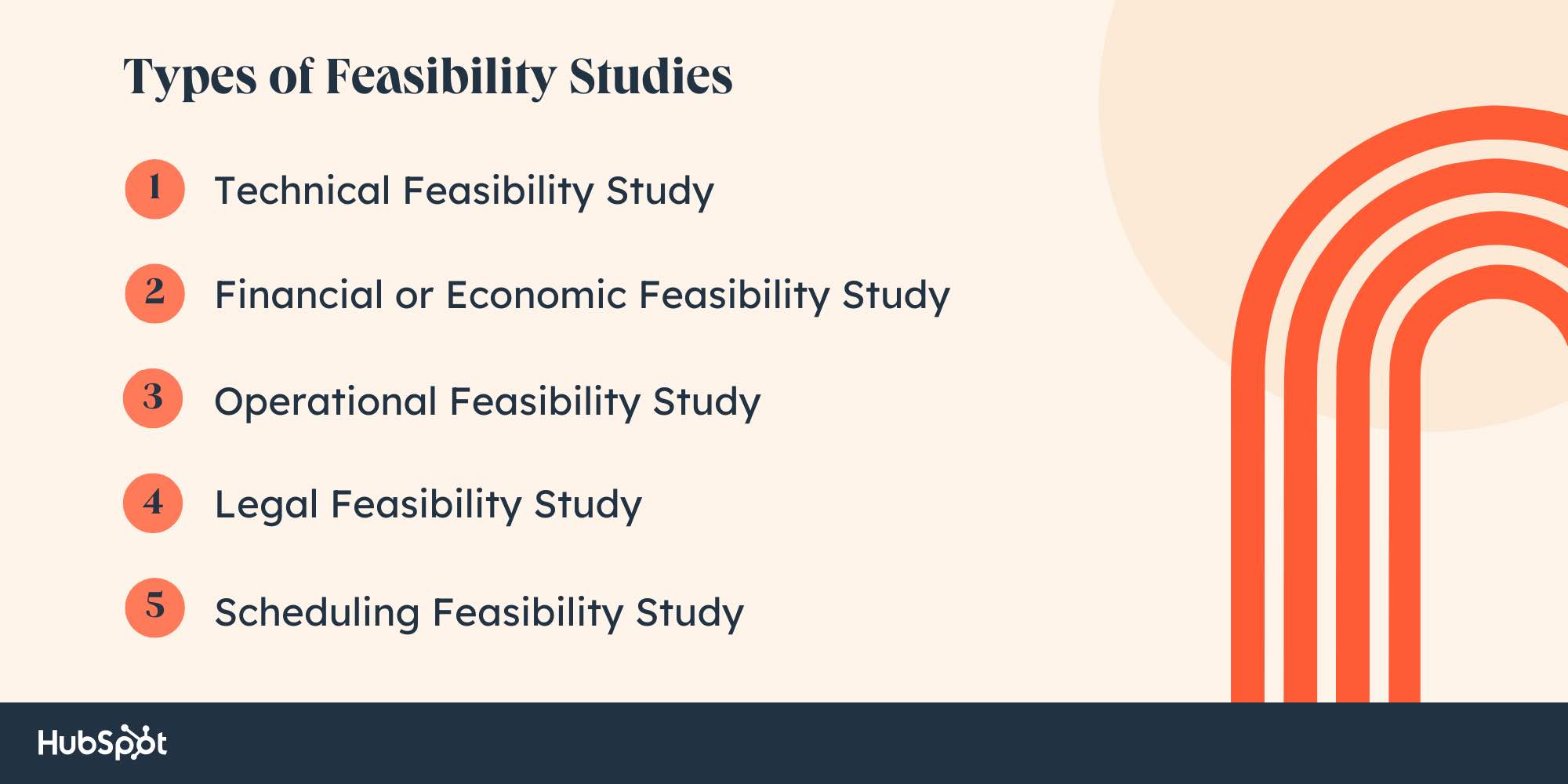
Technical Feasibility Study
A technical feasibility study looks at your project’s technical aspects. This type of study answers the question: do you have the specialized resources and capabilities to carry out this project?
You might have the appropriate funding for a project, but a technical feasibility study will help you determine if you have the right processes, systems, and staffing for the job.
Best for: Software development teams and project development teams
Financial or Economic Feasibility Study
Financial feasibility studies can help you determine if you have the funding for your project. Plus, you’ll learn the venture is an overall good investment for your team and your company. These kinds of feasibility studies ask: is the allotted funding amount appropriate for this project?
By completing a financial feasibility study, you’ll have already identified funding sources, expenses, your budget, any potential risks, and expected revenue.
Best for: Financial managers and project managers
Operational Feasibility Study
As the name suggests, an operational feasibility study analyzes whether or not your team is equipped to carry out the proposed plan or project. This feasibility study answers the questions:
- Does your team have the means to complete the project?
- Will the project add value for your team or your customers?
Consider conducting an operational feasibility study if you have developed a solution for a potential problem. This kind of study will help you determine if the solution solves the problem or creates more issues.
Best for: Project managers and stakeholders
Legal Feasibility Study
This feasibility study should be performed to determine if your proposed project is legal and ethical. Legal feasibility studies are designed to keep you and your team aligned with local, state, and federal laws.
If you are unsure if your project is unethical or unlawful, a legal feasibility study will help you make the appropriate decision before you begin.
Best for: Legal departments and project managers
Scheduling Feasibility Study
When starting a new project, you’ll often be asked, “When can we reasonably expect this project to be completed?”
If you and your team are working for clients and are on a deadline, a scheduling feasibility study looks at the project’s timeline. That can help your team determine a reasonable completion date.
After completing a scheduling feasibility study, you might find the plan requires more time than you thought. This is helpful to know before you begin a project.
Best for: Stakeholders, project managers, and their teams
How to Write a Feasibility Study
If you are wondering how to write a feasibility study, look no further than ourfeasibility study template.
Before you jump into writing your own study with our feasibility study template, take a minute to familiarize yourself with each section of the template. Keep in mind, the feasibility study temple can be customized to fit the needs of you and your team.
1. Executive Summary
Your executive summary should be a one-page summary of the entire study. Make sure to include the following:
- The project name.
- A description of the project.
- The goals of the project or plan.
- The target market.
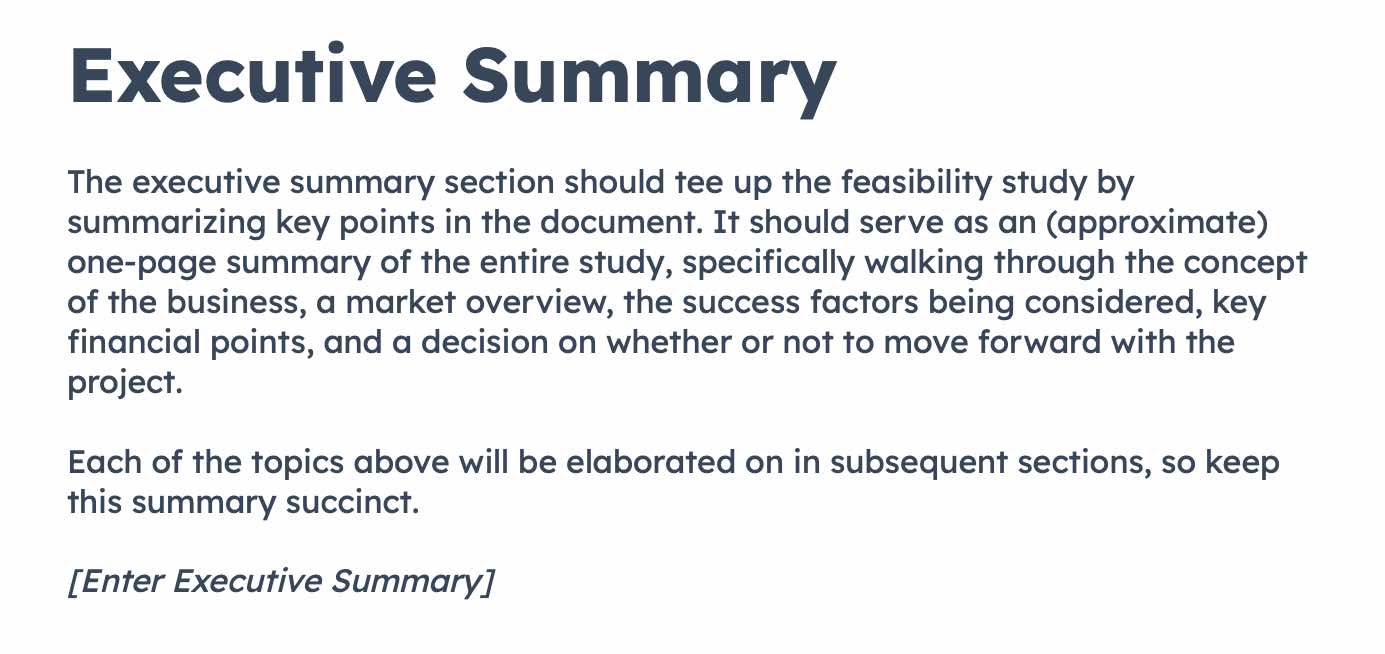
Image Source
2. Business Explanation
This section of the feasibility study is your space to introduce the business concept of your project or plan. Consider discussing:
- The purpose of the project or plan.
- Products or services.
- Competitive advantages.
- Experience of its founders.
If your project is feasible, you’ll want to be as specific as possible in this section and discuss the project’s projected success.
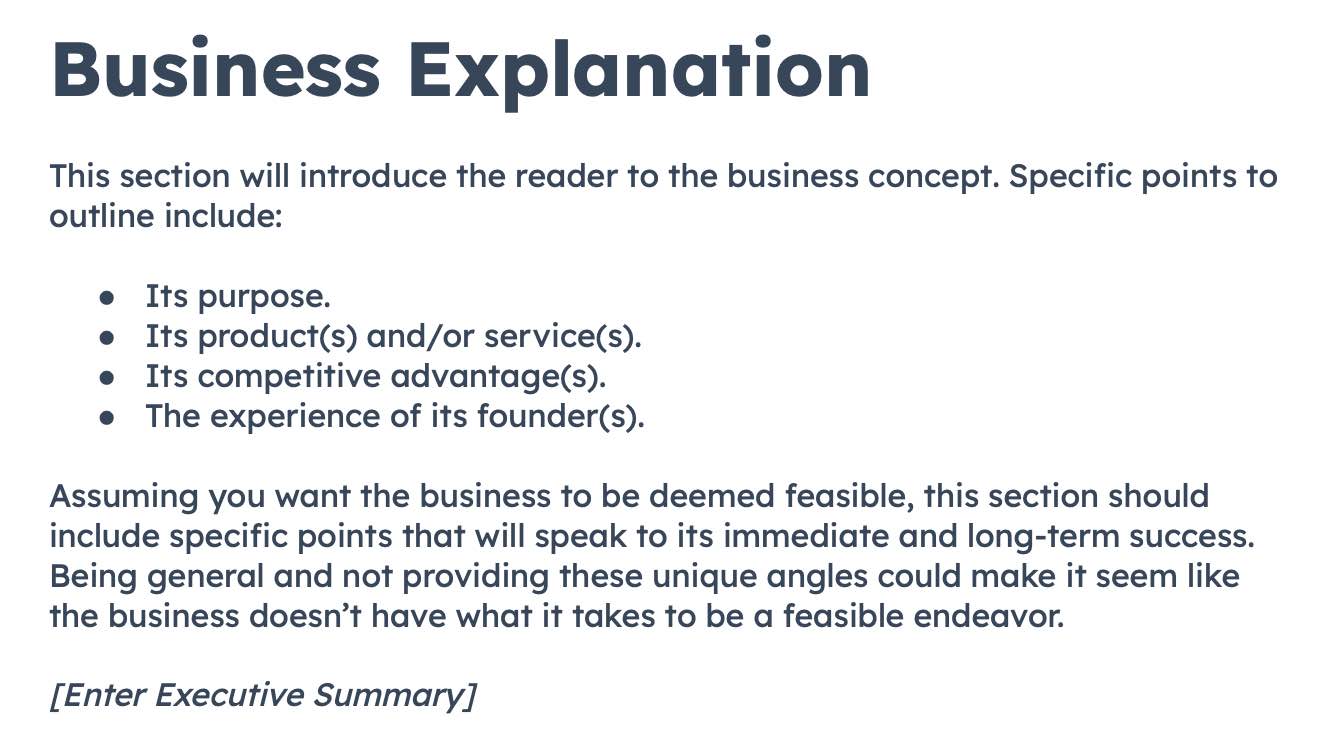
Image Source
3. Market Overview
This section of your feasibility study should discuss your target market and why your project or plan will (or will not) succeed. You’ll want to discuss your target market in-depth, its pain points, and how your proposed product or service will solve the problems.
You’ll want to include valid data in this section. Consider featuring:
- The market size and demographics.
- The market psychographics.
- Competitors and substitutes.
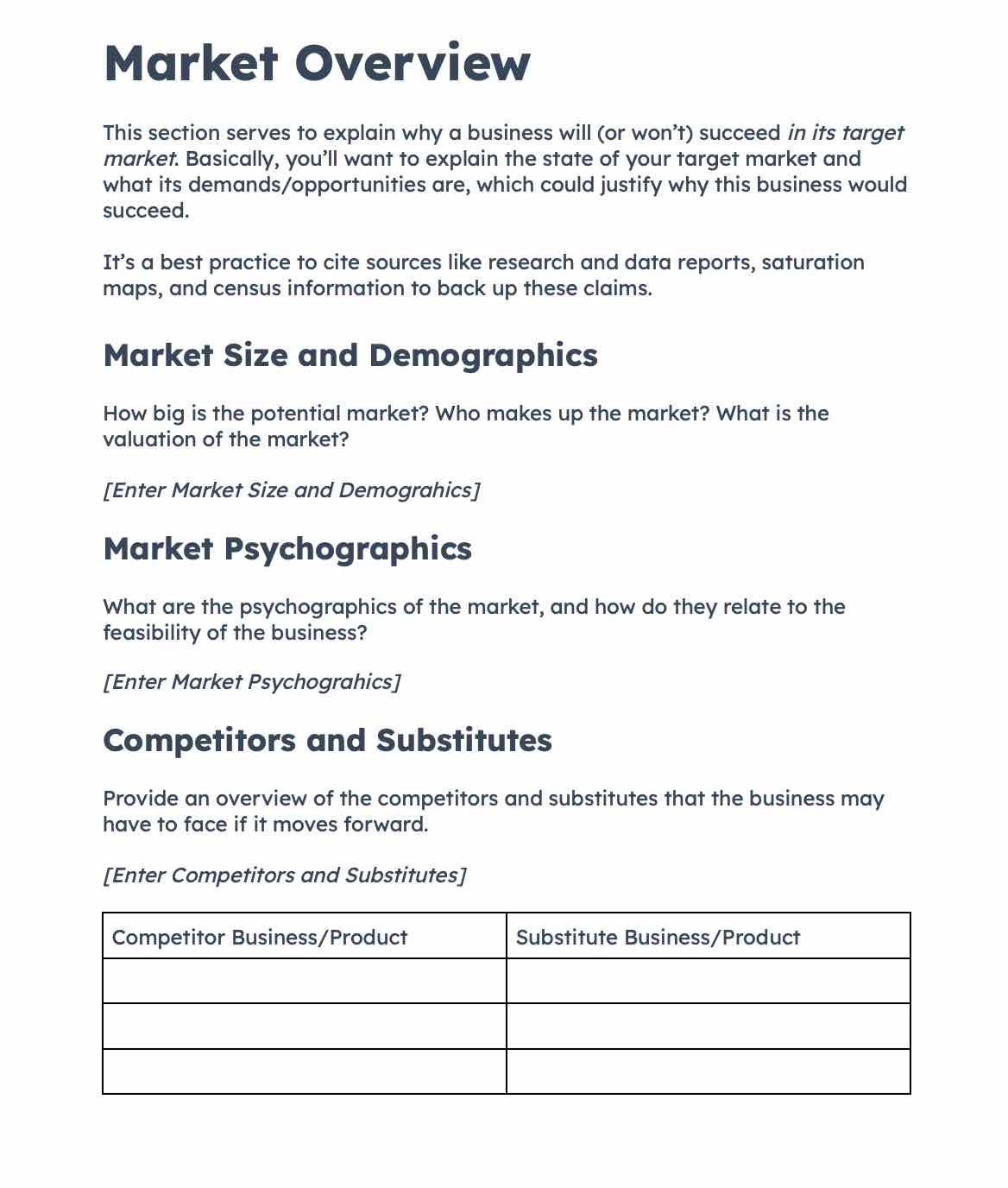
Image Source
4. Financial Projections
Every good business endeavor is meant to make a profit. Your feasibility study should determine if the project or plan is a financially wise investment. The financial projections section of the feasibility template outlines and discusses critical financial metrics.
Considering including and discussing:
- Capital needs.
- Projected revenue and expenses.
- Projected revenue needed to break even.
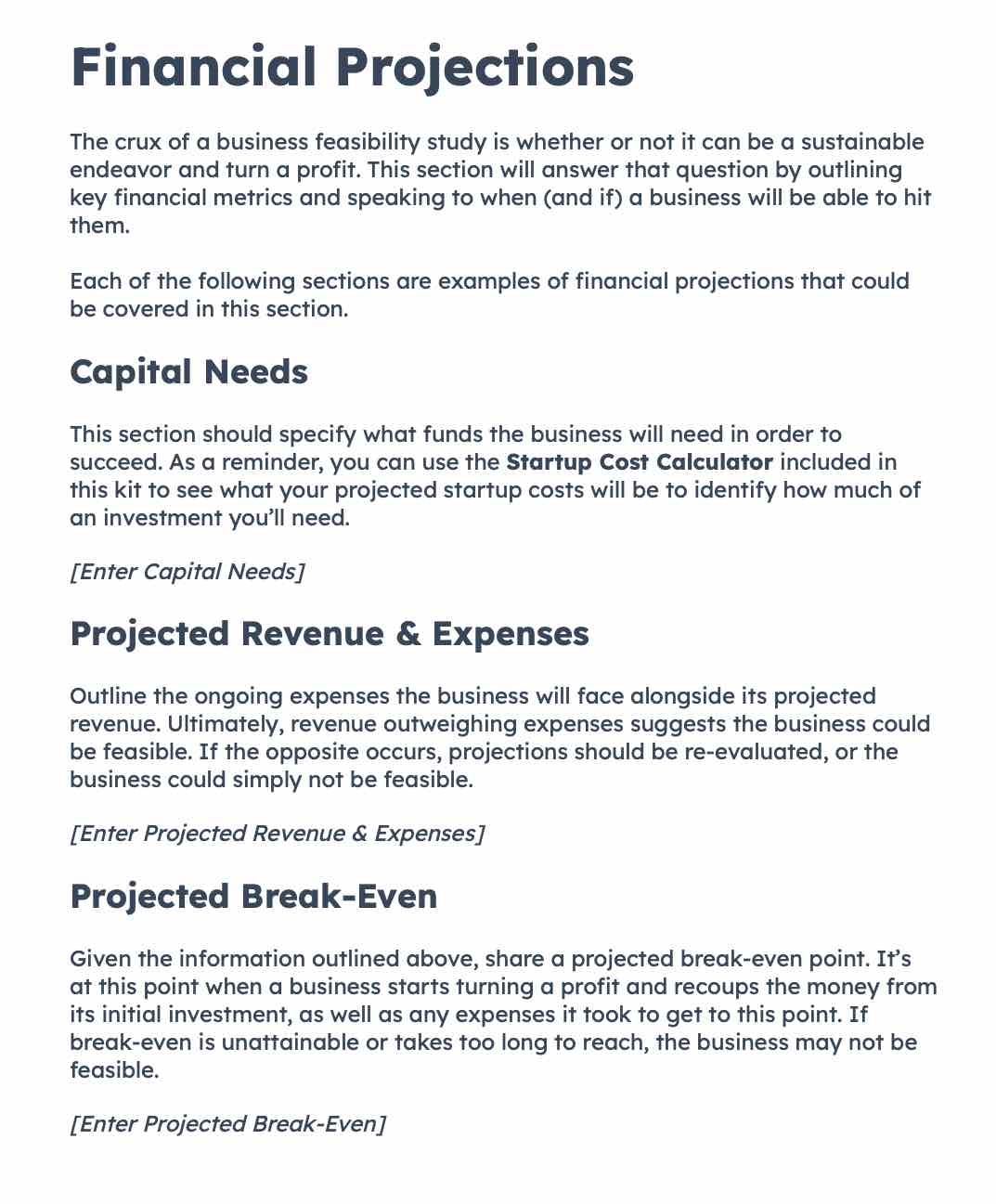
Image Source
5. Feasibility Assessment and Conclusion
In your conclusion, be as clear and specific about your proposed project or plan as possible. Use statements like, “Based on our assessment of (X), we have deemed this business project feasible.”
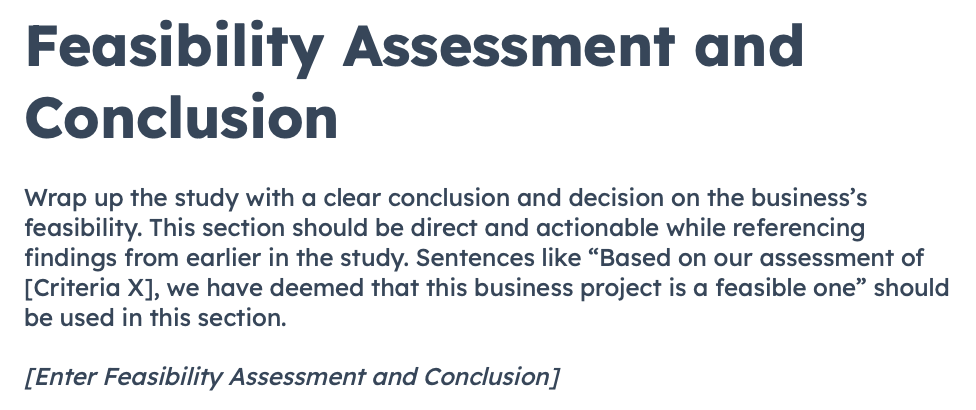
Image Source
Feasibility Study Examples
Feasibility studies can be helpful across your entire organization — from the sales team to the product development team. Here are a few examples of feasibility studies conducted in various industries.
Howard County Public School System
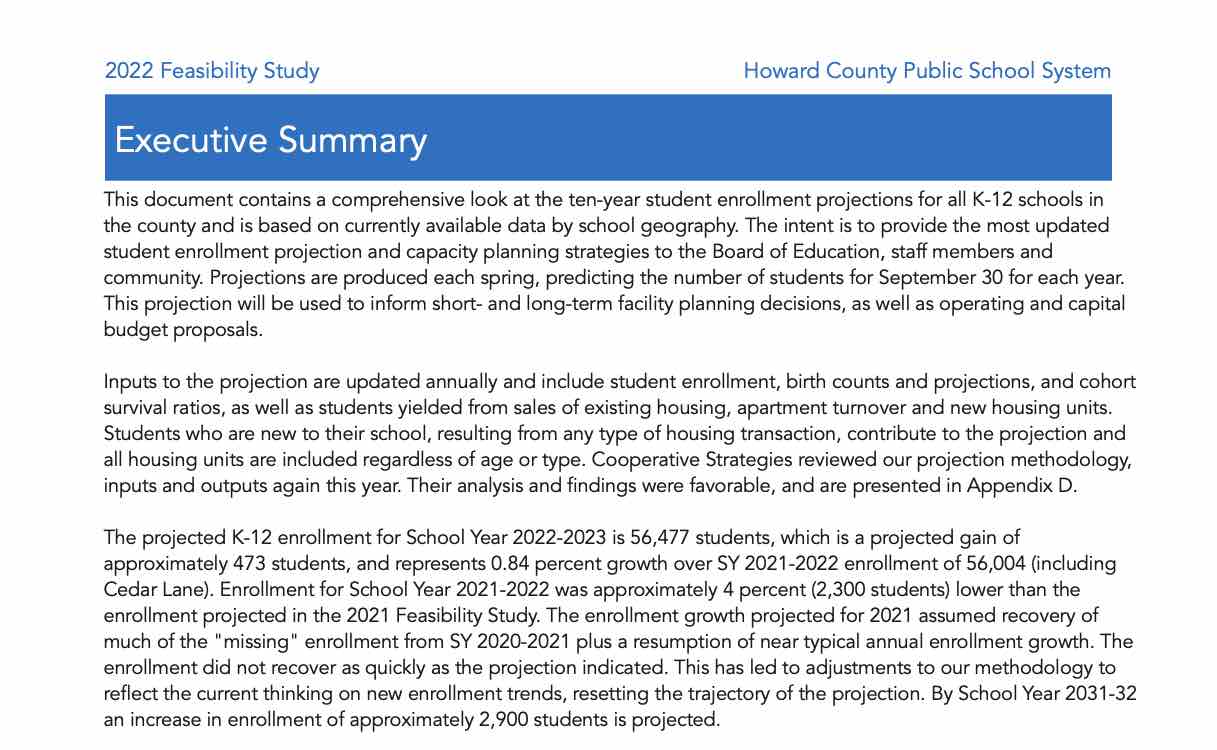
Image Source
The Howard County Public School System’s feasibility study dives into projected student enrollment over a 10-year period.
What we love: The school system offers an excellent example of a brief, but thorough, executive summary. In this section, Howard County Public Schools also includes specific historical data used throughout the study.
Town of Walpole, Massachusetts
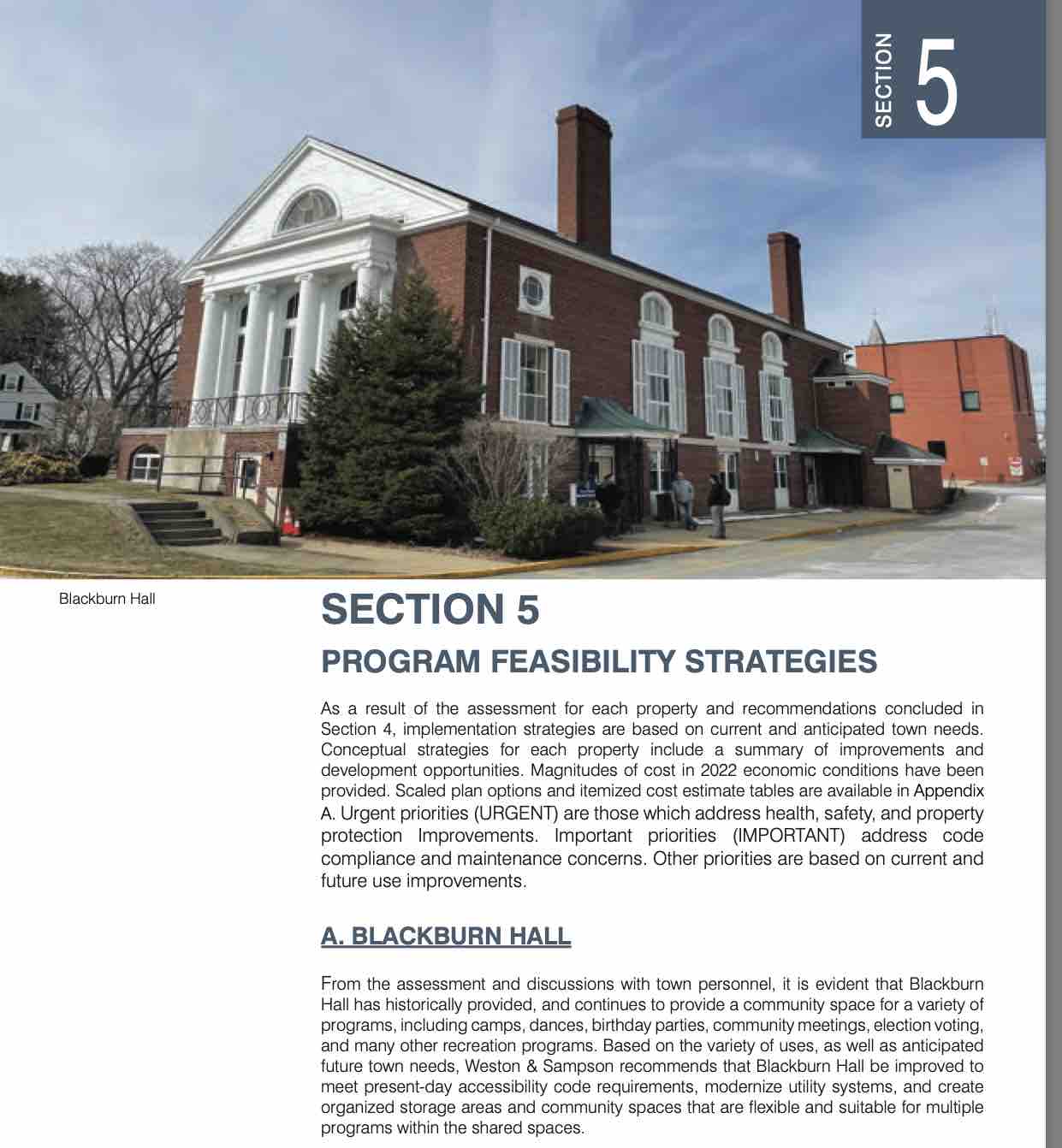
Image Source
This feasibility study from the Walpole, Massachusetts’ explores the town’s recreation programming and facilities. Throughout, the document includes program recommendations with data that explains how the researchers came to this conclusion.
What we love:This document combines several different types of feasibility studies (financial, technical, and operational) into one comprehensive study. Remember, you can mold your feasibility study to fit your organization’s needs best.
U.S. Fish and Wildlife Service
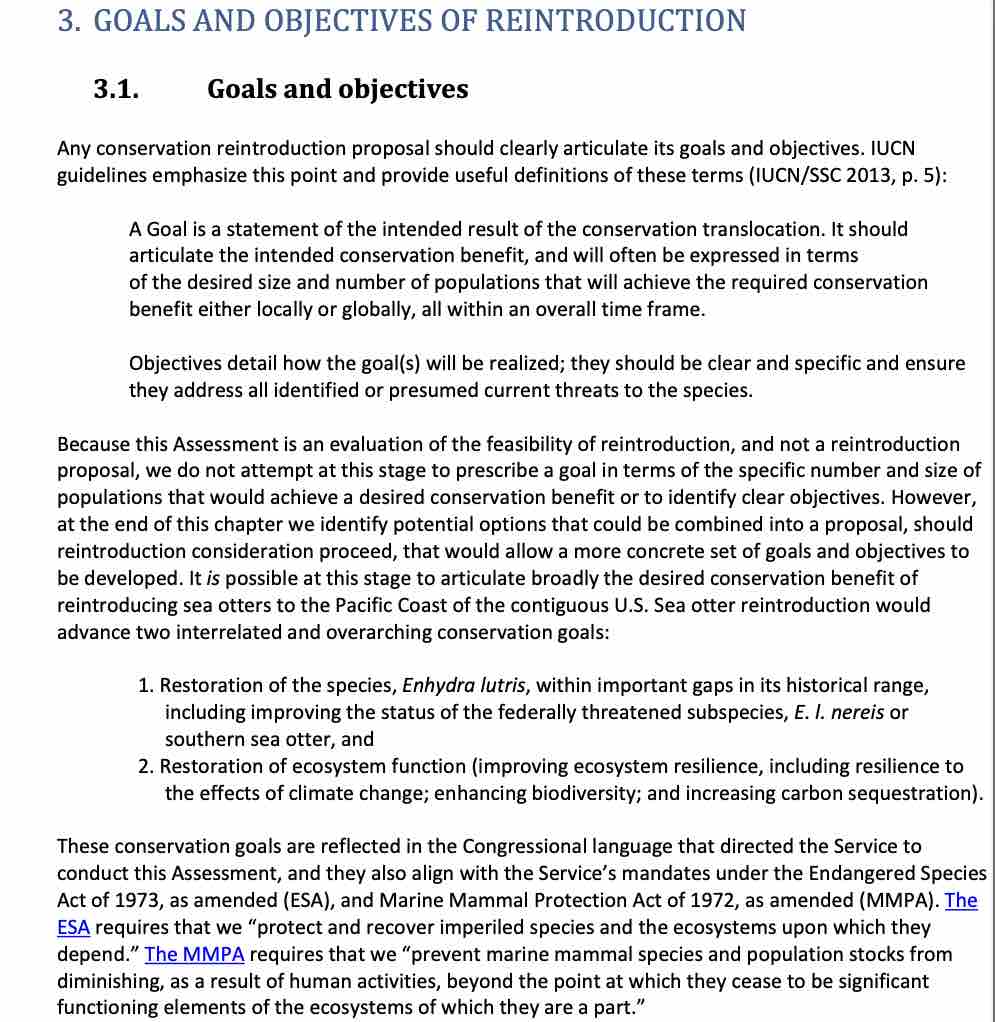
Image Source
In this example, the U.S. Fish and Wildlife Service explores the feasibility of reintroducing sea otters to areas of the Pacific coast. This study also provides a model for structuring the objectives section of this document. A good feasibility study is clear and to the point in each section.
What we love: Here, the U.S. Fish and Wildlife Service distinguishes what the study covers (potential options for reintroduction), and what it cannot accomplish (projected population growth from reintroduction).
While your feasibility study seeks to assess a project’s viability, your document will have a limited scope. If you’ll need to gather additional information moving forward, mention that in your feasibility study.
Holdrege Area Public Library
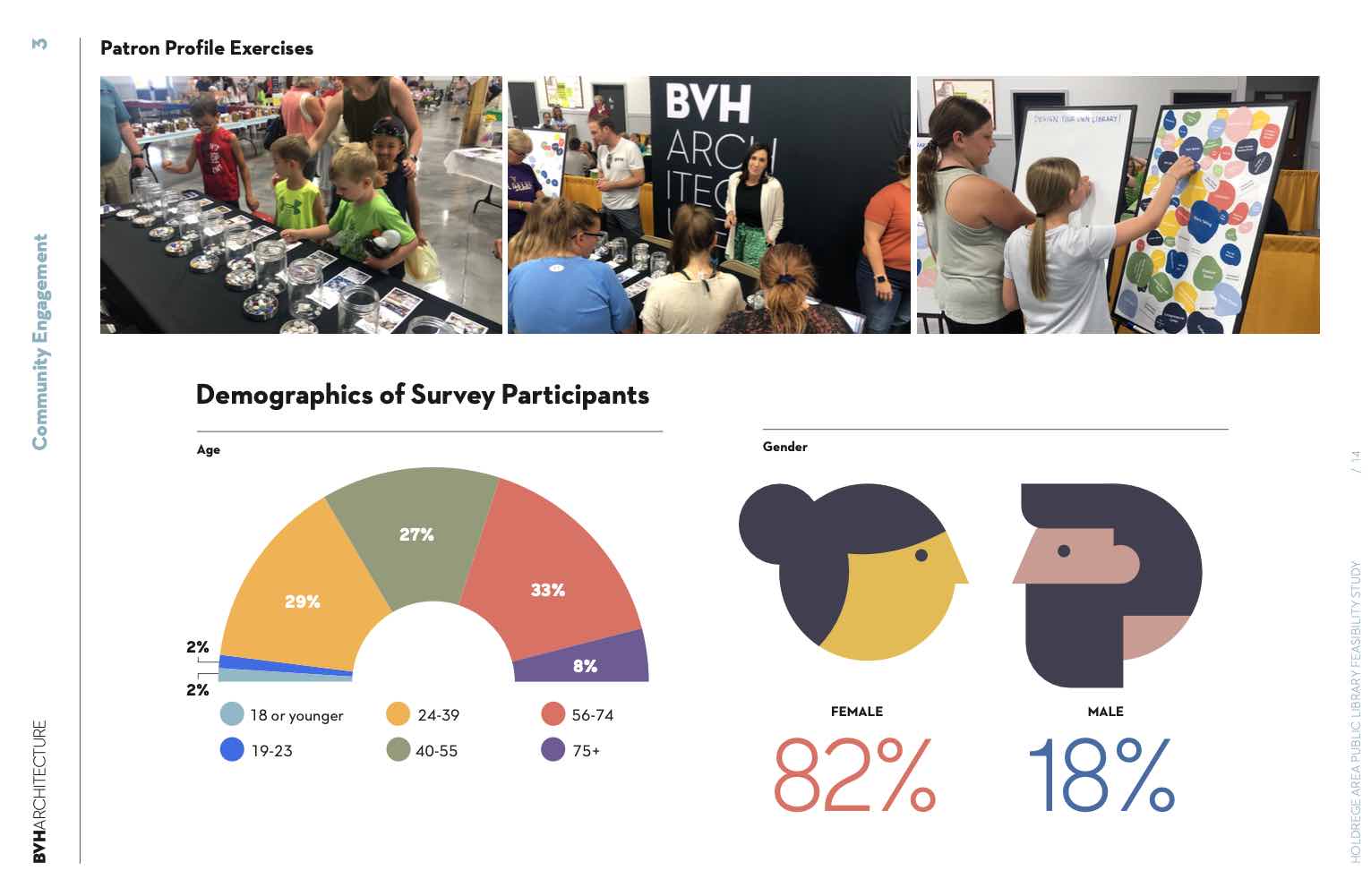
Image Source
Your feasibility study doesn’t need to be all text. The Holdrege Area Public Library makes use of graphics and charts to convey information in its feasibility study.
What we love: Infographics are easy to read. You can absorb important information with a quick skim.
Running Your Feasibility Study
Accurately predicting the success of a project might seem like a daunting task. But it doesn’t have to be. There are many ways to conduct a feasibility study. Stary by leveraging the tools you already have, like HubSpot’s Forecasting Software and our feasibility study template.
Your job as a sales leader is to help your team increase your organization’s bottom line. With the use of sales forecasting data and feasibility studies, you’ll be able to pursue the projects that will yield the highest ROI.
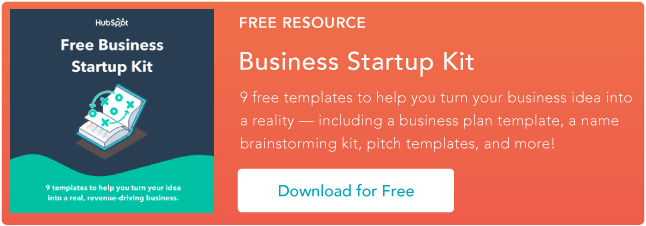
![]()


